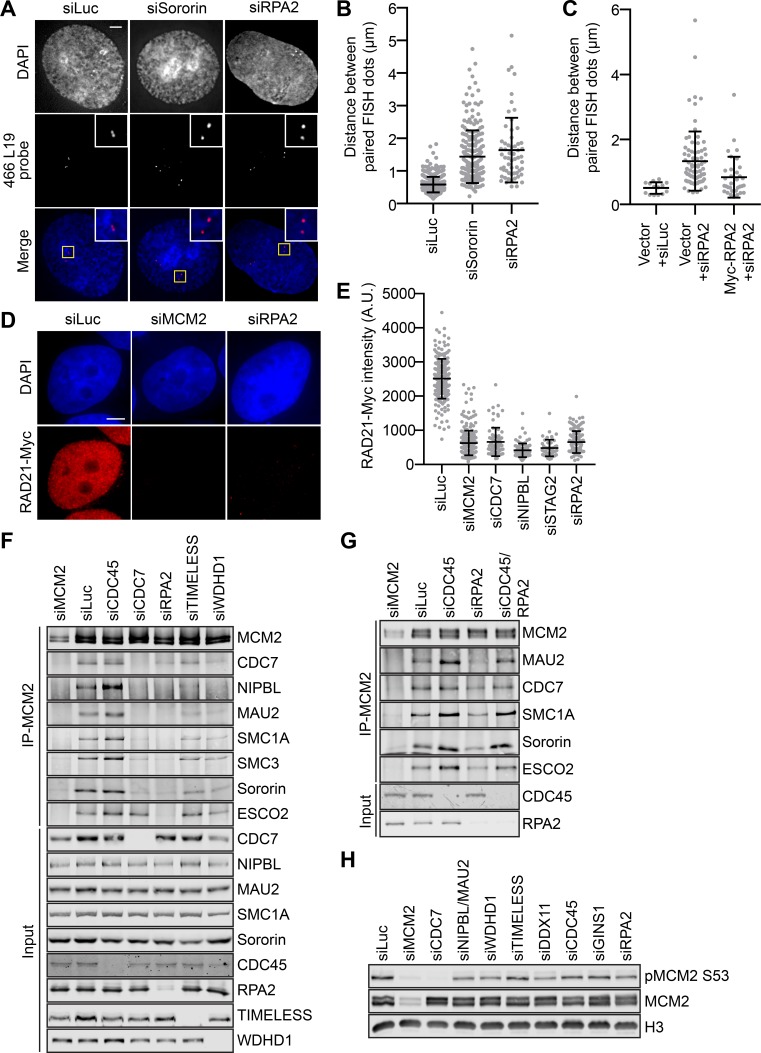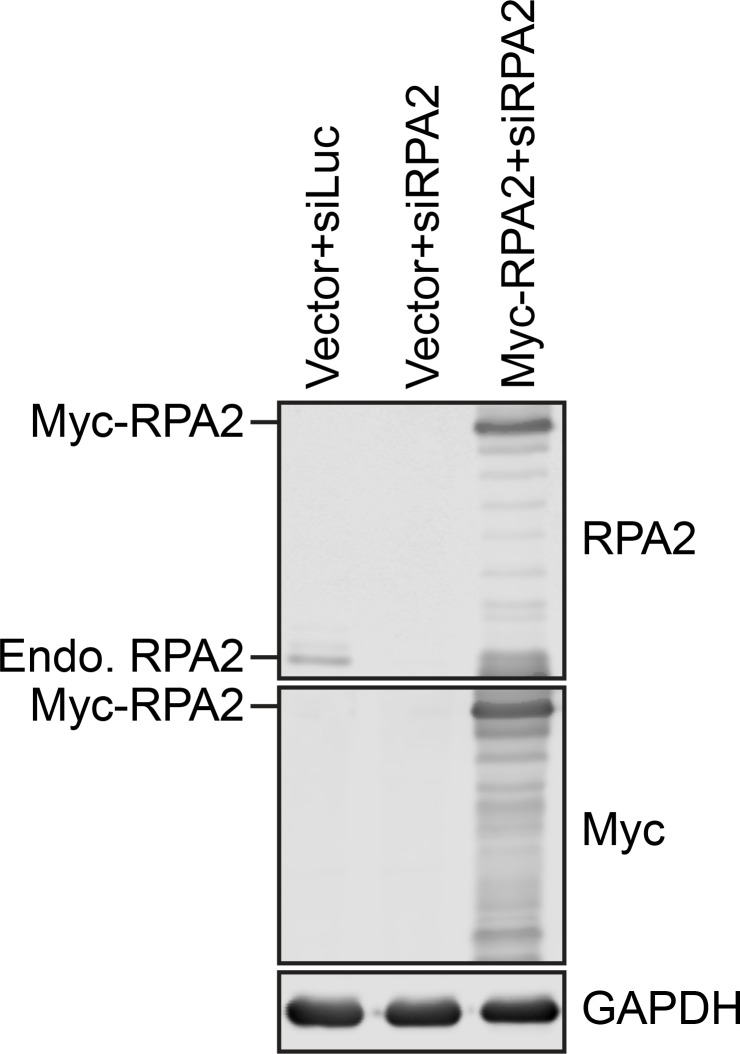Figure 6. RPA promotes interphase sister-chromatid cohesion, cohesin loading in early S phase, and the MCM–NIPBL–cohesin interaction.
(A) Representative images of G2-enriched HeLa cells transfected with the indicated siRNAs and stained with DAPI (blue in merge) and the early-replicating 466L19 FISH probe (red in merge). Selected paired FISH signals are magnified in inset. Scale bar, 5 μm. (B) Quantification of the distances between paired FISH signals of cells in (A). Mean ± SD (siLuc, n = 439; siSororin, n = 226; siRPA2, n = 59). (C) Quantification of the distances between paired FISH signals in G2-enriched HeLa cells transfected with the indicated plasmids and siRNAs. Mean ± SD (Vector + siLuc, n = 14; Vector + siRPA2, n = 78; Myc-RPA2 +siRPA2, n = 34). (D) DAPI (blue) and anti-Myc (red) staining of HeLa cells that stably expressed RAD21-Myc. Cells were transfected with the indicated siRNAs and arrested in early S phase with thymidine before fixation and staining. Scale bar, 5 μm. (E) Quantification of the chromatin intensities of RAD21-Myc of cells in (D). Mean ± SD (siLuc, n = 215; siMCM2, n = 298; siCDC7, n = 75; siNIPBL, n = 91; siSTAG2, n = 52; siRPA2, n = 131). (F,G) HeLa cells were transfected with the indicated siRNAs, synchronized in early S phase by thymidine, and lysed in the presence of Turbo nuclease. The total lysates (input) and anti-MCM2 immunoprecipitate (IP) were blotted with the indicated antibodies. (H) Lysates of HeLa cells transfected with the indicated siRNAs and arrested at early S phase with thymidine were blotted with the indicated antibodies.





